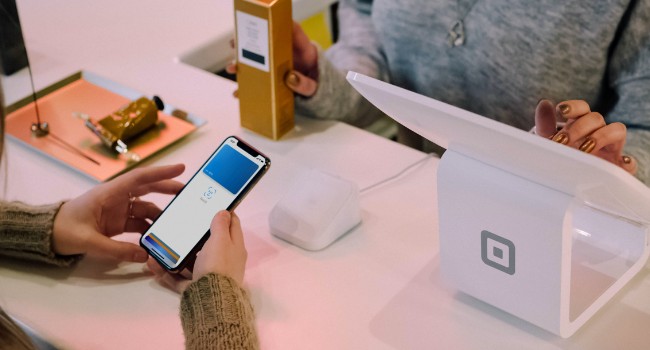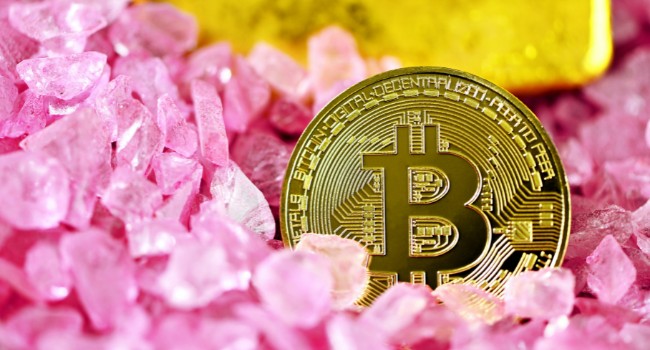June 8, 2021
Digital wallets have gone mainstream at a surprisingly fast pace. So much so that banks now not only offer digital wallets but also predict their use will become the most popular contactless way to pay.
OnlineLoans.com.au takes a look at digital wallets and cryptocurrency and finds out what they are, their use cases and what they can offer.
What are digital wallets?
Digital wallets are secure smartphone apps that contain digital versions of credit and debit cards. Examples include apps by the big tech brands; Apple Pay, Samsung Pay and Google Pay.
Many digital wallets allow users to make payments while hiding their card information from retailers. This adds a layer of security for users. The digital card is encrypted meaning that important data is converted into code to prevent unauthorised access.
Digital wallets (eg. Apple Pay) do not actually display the card number and instead use a generic image of a card instead.

(Using a digital wallet is getting very common in Australia)
Payments can be made using a phone rather than fumbling around in an ‘analog’ wallet for a card – or even cash. Typically, payment chips / contactless chips are more durable in phones than plastic cards – you’re less likely to hear “sorry, try again” at the register when using a phone.
To make a payment, a user simply activates their digital wallet and holds their phone near the contactless point of sale, just like when using a traditional card.
Fortunately, the technology doesn’t cost patience
Via a bank app, users simply ‘give permission’ for their card to be added to a digital wallet. This is usually done securely via an SMS authentication code.
Once added, the user can pay for items using their phone. For example, iPhone users simply double tap the side button, authenticate with Face ID, then use the phone as a card to make a payment at checkout.
The stats behind digital wallets
“Typically, there are no extra fees for the consumer.”
Digital wallets aren’t as new as they might seem. In Australia, spending via digital wallets grew 17% from February 2020 to March 2020, 36 million transactions for the month alone.
2021 hasn’t shown the trend to be lagging.
In March 2021, Australia recorded 68 million digital wallet transactions – 90% up year-on-year. The value of all that spending rose by 110%, or from $1bn to $2.1bn.
Due to the demand for digital wallet purchasing, limits are set at $200, double payWave’s $100.
Other digital wallets statistics
- CBA predicts digital wallets will be the most popular contactless way to pay by the end of this year.
- 46.5% of Australians have a digital wallet on their smartphone (March 2021)
- Only 18% of people use cash more often than cashless options
- Most Australian institutions pay around 0.04% – 0.06% of the value of the transaction to offer their cards to customers on Apple Pay. Typically, there are no extra fees for the consumer.
- Digital wallets in order of popularity in Australia;
Apple Pay
Google Pay
Samsung Pay
Digital wallets and cryptocurrency
Digital wallets can hold currencies other than the Australian dollar. In February this year, crypto fans rejoiced as Apple Pay introduced BitPay Prepaid Mastercard support to Apple Wallet. This means that Apple Pay users can spend Bitcoin, the world’s most valuable cryptocurrency, in stores and online.
BitPay is a cryptocurrency payment provider that allows users to pay for goods and services with Bitcoin, Bitcoin Cash, Ethereum and other cryptocurrencies.
Using cryptocurrency to make purchases is more common online, but traditional retailers are beginning to offer the service. Sometimes, the purchase is made solely in cryptocurrency, like Bitcoin for example. Cryptocurrency can be fractionalised or divided into smaller portions.
This means the equivalent amount of Bitcoin in the dollar price of an item is sent to a seller’s digital wallet and kept as Bitcoin. For example, a $25 meal, which is 0.000506 BTC at the time of writing, means that 0.000506 BTC is sent from the customer to the restaurant.
Sometimes, the amount of cryptocurrency sent from a buyer (customer) is converted into Australian dollars when received by the seller. This allows cryptocurrency holders to make transactions with sellers preferring Australian dollars.
Bitcoin and cryptocurrency in a nutshell
“That translates to a 7,887,500,000% increase.”
Most people know the orange ‘B’ Bitcoin logo, but there are actually over 10,000 different cryptocurrencies.
Released way back in January 2009, Bitcoin quickly became a worldwide investment opportunity and curiosity. One of the earliest recorded prices of Bitcoin was US$0.0008 and hit US$1 until early 2011. It peaked at around US$63,100 in April this year. That translates to a 7,887,500,000% increase.
As many analysts and enthusiasts point out, Bitcoin has proven itself the best performing asset in world history.
Other cryptocurrencies like Ethereum, XRP Ripple, Litecoin and others soon followed in the early 2010s.
Cryptocurrencies use decentralised technology which means they don’t rely on a bank or ‘centralised’ entity to control transactions. The transactions are ‘public ledger’, meaning that peer-to-peer (or digital wallet to digital wallet) movements of the asset are publicly viewable online.
This is where ‘miners’ come into play
Bitcoin (or crypto) miners essentially get ‘paid’ or rewarded in Bitcoin/cryptocurrency as ‘auditors’ of the public ledger. They use powerful computers to perform complex algorithms which protect, verify and ‘chain’ together ‘blocks’ of transactions made by users – hence the famous “blockchain”.
There are a total of 21 million individual Bitcoins available. Around 18.72 million are in circulation as of June 2021. As more are ‘mined’, the reward paid to miners decreases, therefore, increasing the currency’s scarcity.
It’s predicted that the final Bitcoin will be mined in the year 2140, after this, miners will likely be rewarded in transaction fees.
In other words, around 89.15% have been mined since 2009 but the remaining 10.85% will take 119 years to mine. It’s also estimated that 3-4 million BTC are lost in inactive/inaccessible digital wallets or old hard drives/devices, further increasing scarcity.
Some Bitcoins have unfortunately been thrown out as rubbish.

Cars and cryptocurrency
Like other products, cars, too, have been bought with cryptocurrency – albeit in very small numbers.
However, that might change. In March this year, Tesla CEO Elon Musk, announced that his company would accept Bitcoin as payment for vehicles. Musk has since backtracked on the idea blaming cryptocurrency’s large use of power (mainly from fossil fuels). Not exactly ‘inline’ with zero-emission electric vehicles.
Why would people want to buy cars with cryptocurrency?
The primary reason is that if someone has made considerable gains in cryptocurrency, they may prefer to use that rather than cash. Converting cryptocurrency to Australian dollars often attracts fees or losses due to market values.
Why would car dealers and sellers accept cryptocurrency for cars?
Like with any product, there are two main reasons for accepting cryptocurrency;
- Sales can be converted into Australian dollars
- The seller may want to increase their cryptocurrency holding as they expect the value to rise
Many car dealerships around the world are already accepting cryptocurrency as payment. Whether that’s received as a cryptocurrency or in the country’s native fiat currency is at the seller’s discretion.
Digital wallet weigh in
Whether cryptocurrency is the way of the future is debatable but their use and the use of digital wallets is here to stay.
As evident in the statistics, contactless payments received a huge boost in the wake of the COVID pandemic.
Cryptocurrency can also offer speed through digital wallets as many virtual coins can be instantly (within seconds) sent and received regardless of the amount. Anything from a single dollar’s worth of cryptocurrency to the value of luxury cars (and more) can be sent and received instantly and securely.
Sign Up to the OnlineLoans.com.au Newsletter
Get offers, contests and promos delivered straight to you inbox
